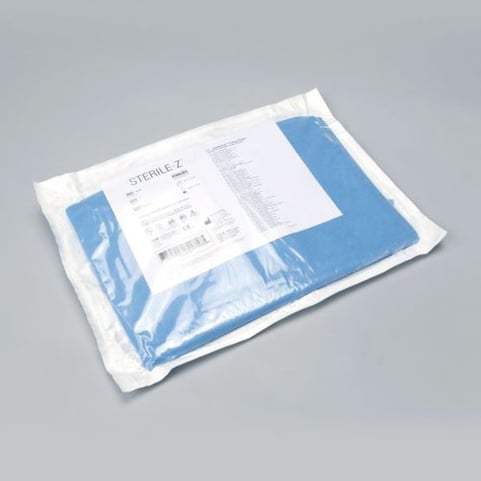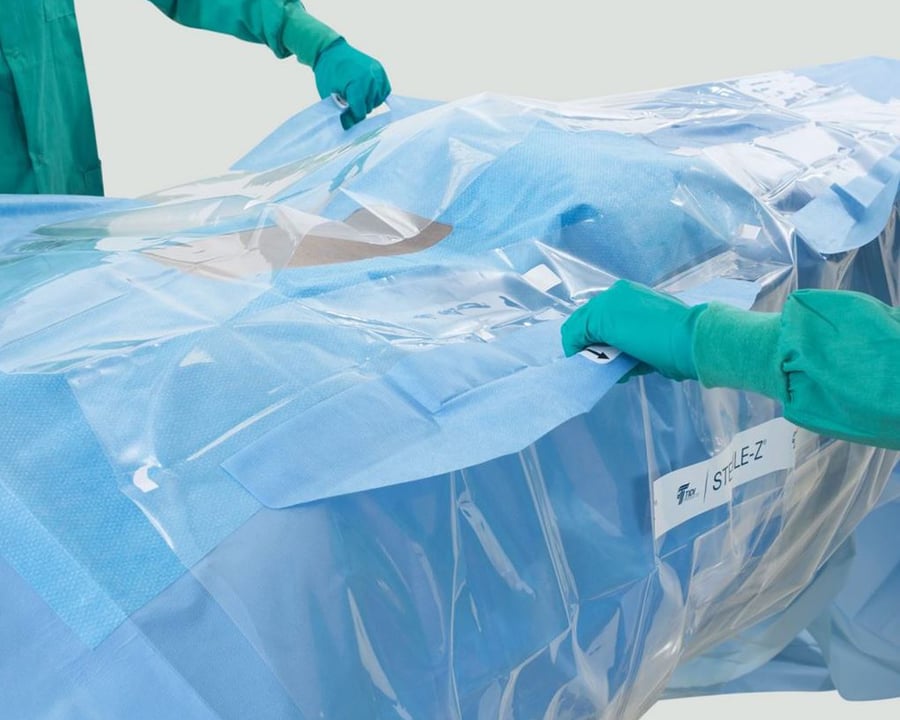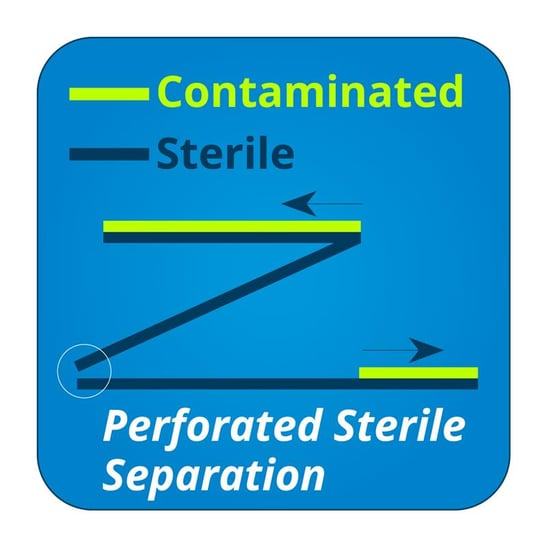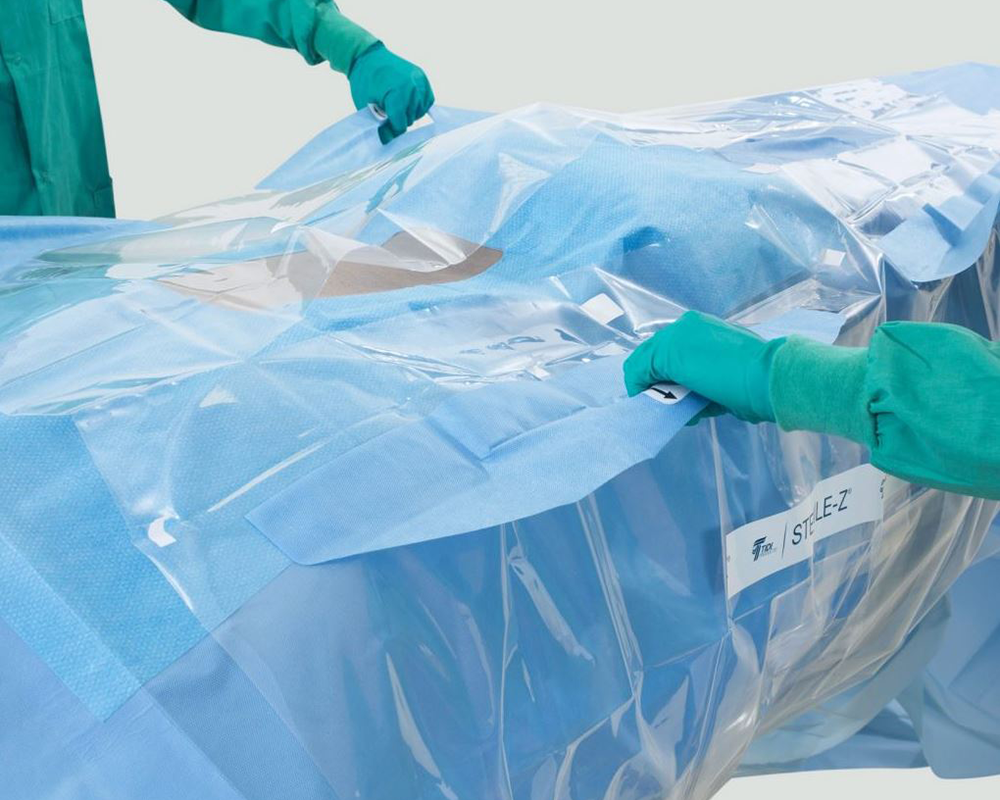Patient Drape Optimized To Reduce Contamination Risk and Improve Workflow
In this article, we’ll be talking about the Sterile-Z® Patient Drape with one of its inventors, Eric Strauch, PA-C, MMSc. Created to help protect the intraoperative patient during 3D imaging, the easy-to-use, transparent Sterile-Z Patient Drape incorporates an AORN-compliant removal process
 Sterile-Z Patient Drape (in Packaging)
Sterile-Z Patient Drape (in Packaging)
TIDI manufactures three Sterile-Z products: the Sterile-Z Patient Drape, the Sterile-Z Back Table Cover, and the Sterile-Z Mayo Stand Cover. Each has been designed to reduce the risk of contamination while improving workflow. An ingenious Z-fold feature and simple, intuitive instructions for use (IFU) help medical professionals save time without compromising safety.
Questions & Answers
Melanie Fayta (TIDI Products): How is the Sterile-Z Patient Drape used in your facility?
Eric Strauch* (co-inventor of Sterile-Z): Each surgeon has a preference card. As we use a 3D radiographic device in conjunction with a navigation camera for every lumbar and thoracic spine fusion case, we simply requested that two Sterile-Z Patient Drapes be added to our preference card for each case.
This request led to us always having one of the Sterile-Z Patient Drapes readily available at each of the two points in time during the case when we bring the 3D radiographic device into the field – that is, immediately before placing the instrumentation using CT guidance and then once again immediately after the instrumentation has been placed so that we can confirm precise placement.
MF: Has the Sterile-Z Patient Drape made cases easier?
ES: Having used it for years in every spine fusion case involving instrumentation, I can tell you that the drape provides a true ‘R&R’ [rest and relaxation] moment for the surgeon and assistant. We place the drape effortlessly in less than 30 seconds. One or two nonsterile team members, such as an x-ray tech and a navigation rep, are able to attach the ‘under-the-table’ straps in less than 15 seconds, effectively wrapping the patient along with the sterile surgical field.
Given the transparent film used in the drape, the reference frame is easily visualized by the navigation camera at the foot of the bed during CT acquisition.
 Sterile-Z Patient Drape (Close-up View)
Sterile-Z Patient Drape (Close-up View)
MF: What about workflow? How has the Sterile-Z Patient Drape improved that?
ES: The Sterile-Z Patient Drape has had a tremendous impact on workflow and efficiency. When compared to our prior makeshift drape system as well as the commercialized ‘condom-type’ O-arm drape, well, there is no comparison. The Sterile-Z Patient Drape is safe, slick, simple, and stress-free!
MF: That has a nice ring to it. Can you elaborate?
ES: Of course. It’s safe from an infection-prevention standpoint, plus the ‘under-the-table’ wrap component decreases the chance of inadvertently dislodging catheters and IOM wires. It’s slick and simple because the drape is placed in seconds by the surgeon and assistant, similar to when a familiar laparotomy drape is placed. Then it’s removed after the CT acquisition by two non-scrubbed individuals in less than 5 seconds, immediately allowing the surgeon and assistant to continue the surgery without even a glove change. And there you have it, stress-free.
In fact, whenever we have new personnel or a visiting surgeon in the OR, the Sterile-Z Patient Drape catches their attention each and every time thanks to the efficient workflow it facilitates!
MF: What problem were you trying to solve by inventing this product?
ES: The impetus was the concern we had about potential contamination whenever we needed to image an anesthetized patient with an open wound to develop a surgical guidance template. This technique required a large O-shaped radiological device to surround the patient and take a CT scan set of images. Of course, a nonsterile machine cannot be brought in over the patient and the sterile field – and draping the O-shaped CT machine was fraught with challenges. Therefore, we designed a drape system to protect the patient and the sterile field rather than the machine.
MF: Can you explain the Z-fold approach and what inspired its creation?
ES: In designing a drape to temporarily cover the sterile field, the removal process would be the main challenge. Playing with a 3M Post-it® Note, an invention I’ve always admired, I brainstormed various methods of separation that might preserve the sterility of the two separating edges. I specifically recall the ‘lightbulb moment’ when I folded the Post-it Note into the shape that would become the Sterile-Z Patient Drape. I was genuinely excited as I felt it would prove to be the best option given its simplicity.
 Unique Z-fold Technology
Unique Z-fold Technology
MF: How has the Sterile-Z Patient Drape been received?
ES: We are finding great acceptance. It appears to be quite popular in our hospital as well as in others that have used the product.
Why not try the Sterile-Z Patient Drape in your facility? Request a free sample today!
*Eric Strauch is a paid consultant of TIDI Products, LLC.










